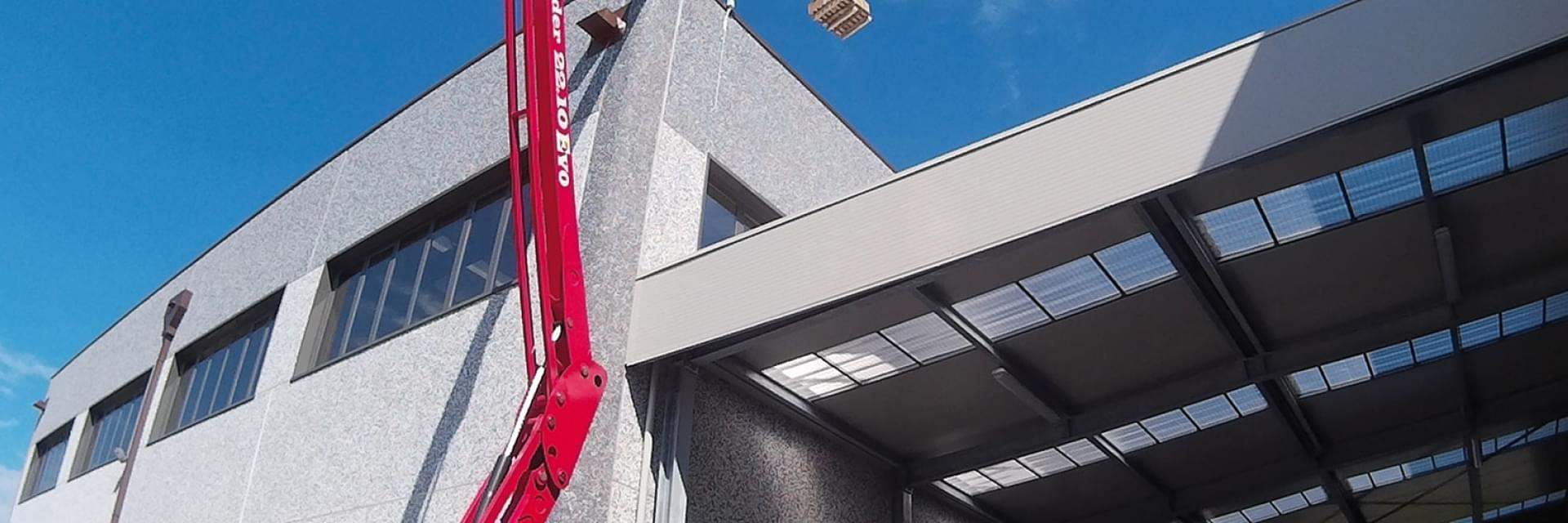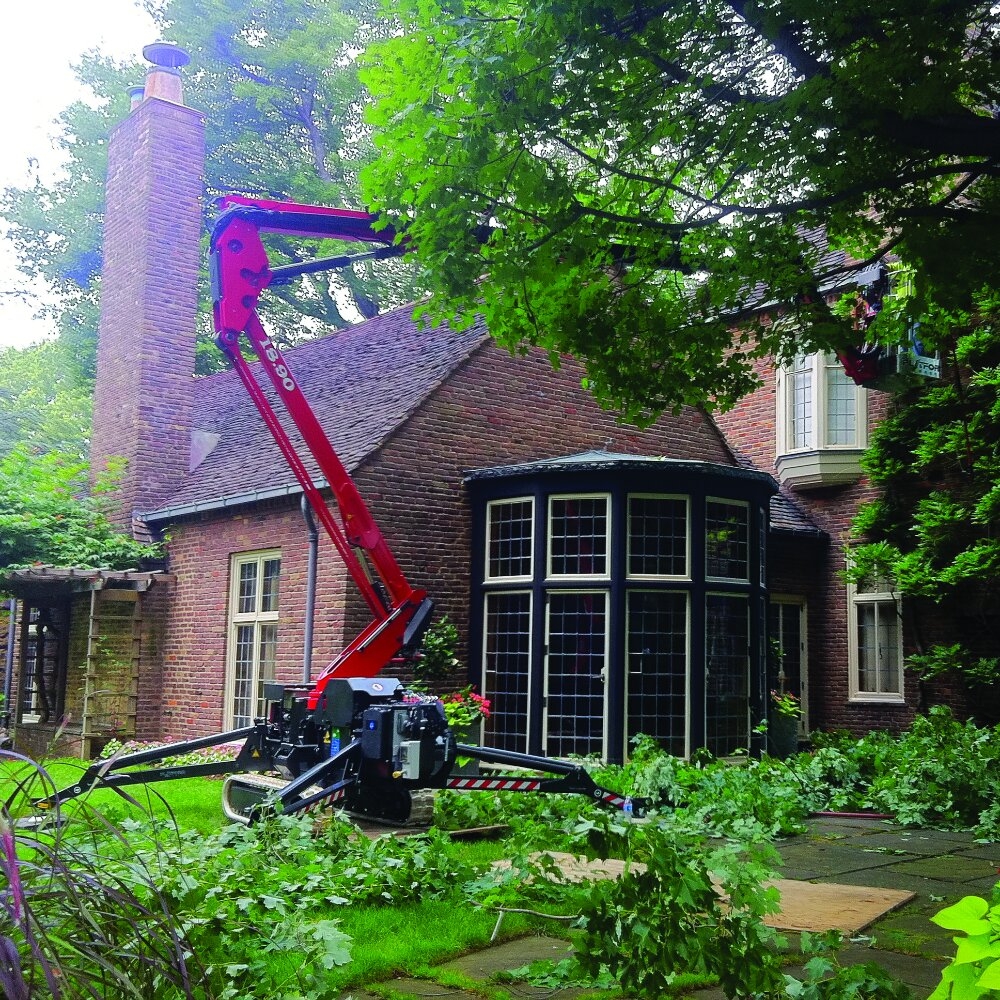
Optimizing Tree Care With Spider Lifts
Greenery abounds in Canada. No corner of the country is untouched by lush, evergreen conifers and bright, seasonal deciduous trees. From the iconic maple to fine spruce, pine, fir, and birch – trees are not just part of the landscape of Canada, but also make up its cultural fabric. After all, 74.1% of the nation’s 1016 towns, cities, and other populated areas are covered by trees.
As a result, the country’s arboriculture industry is booming, and it demands specialized skills and tools such as spider lifts for optimal work. With tree care being one of the most vertically challenging applications, it is critical to exercise safety and precision during a typical job. Of course, spider lifts can help in this regard.
Built to be safe and capable of running smoothly on uneven and unpredictable ground, these platforms help arborists work in all kinds of environments – be it dense canopies or tight urban spaces. They trump traditional climbing and bucket truck solutions by offering workers safer conditions to carry out complex pruning and trimming tasks.
Efficient and reliable, you can trust these machines to see you through tough jobs in difficult spots, provided you use them right. This blog outlines best tree care practices using spider lifts so arborists like you can maximize productivity and safety while carrying out tricky tree care tasks.
How To Use Spider Lifts For Safe & Efficient Tree Care
1. Assess your site thoroughly
Is your job taking you to trim trees on an urban sidewalk? Or perhaps a historical park dotted with shrubs and vegetation of all kinds? While the former’s concrete pavement will provide a stable surface to plant your spider lift on, the latter’s soft ground might cause some stability issues. Either way, both will impact the model you choose and how you use it. So be sure to account for the following in your site assessment:
- Ground stability: Check if the soil is soft or if the tree's roots have created unstable ground for operation. Also, factor in its slope or incline.
- Obstacles: In urban sites in particular, overhead obstacles can present themselves in the form of power lines or nearby buildings. Branches of adjoining trees should also be taken into consideration.
- Access paths: Finally, check if your spider lift has enough space to navigate through sloped driveways, narrow gates, or tight passages. Demarcate a few access paths to ensure your task for the day goes smoothly.
Pro Tip: We strongly recommend using spider lifts with in-built stabilizers so you can keep your machine level on challenging terrains without trouble. Having non-marking tracks is great if the ground is fragile or soft, as they will prevent the machine from sinking while ensuring even distribution of weight.
2. Use the right lift for the job
Broad in its scope, tree care covers all kinds of tasks. Ergo, your spider lift selection should be based on careful consideration. The best way to ensure you have the right one is to match its key performance features with your project’s requirements.
- Prioritize working height and outreach for jobs such as pruning and trimming. Reaching tall canopies to cut off overhanging branches can be difficult if your lift does not have extendable arms. So pick one that allows you greater access to the highest canopy points without causing damage to the surrounding environment.
- Lift capacity is critical if your job requires you to transplant a tree. Ensure that your lift is strong enough to handle the weight of the operator, tools, and the tree if you have a transplant job on hand.
- For tasks such as inspection and tree removal, you need a lift that is capable of navigating all kinds of terrain. It should come with a powerful track system and self-leveling capabilities so you can confidently assess tree health or remove unwanted trees without any major incident.
Pro Tip: Choosing aerial lifts with a small footprint but extensive reach and articulation is useful in suburban and urban environments. However, a range of models for different tree care activities in your fleet will guarantee you can handle all kinds of jobs.
3. Set up your spider lift the right way
The only way to maximize safety during arboriculture tasks is to set up your spider lift correctly, which involves:
- Extending and leveling all outriggers for stability. You can verify how stable the platform is using its built-in tilt sensors before commencing operations.
- Securing your work area with the help of cones, spotters or fencing. Creating an exclusion zone around the lift minimizes the risk of accidents.
- Inspecting surroundings for debris or other potential hazards. You should also take the weather into account – especially wind direction and speed, as falling branches can quickly turn into deadly hazards if work continues in highly unfavorable conditions.
Pro Tip: If you plan to move your machine during tree care, be sure to reassess your lift set-up before running it. Assuming ground conditions are constant can be fatal, so it is wise to spend some extra minutes checking everything is good to go.
4. Gear up for safety
While ensuring operator safety is crucial, hiring certified operators is non-negotiable. Your chosen operator should be trained in operating aerial lifts and should be well-versed with the controls of the model you take onsite. Other safety must-haves include:
- PPE: This should include fall protection harnesses along with other safety gear such as protective eyewear, helmets, and the right shoes.
- Proper communication: Operate carefully and constantly communicate your position to the ground crew via hand signals or radios.
- Emergency readiness: Learn the proper technique to lower your lift in case something goes wrong, such as an injury or power failure.
Pro Tip: Be sure to check your lift operator’s training certificate periodically to assess its validity. Encourage retraining if the certificate has expired or is close to expiration. Moreover, conducting mock safety drills ensures your team is up-to-speed on emergency codes.
5. Protect the surrounding environment
In urban centers, tree care work generally takes place in public parks or residential areas that demand minimal disturbance and disruption. Here’s how you can guarantee that:
- Use non-marking tracks so you do not damage the turf you are on
- Use lightweight and compact platforms so you do not accidentally damage nearby structures or landscaping
- Keep noise and emissions low by opting for models with electric or hybrid engines in sensitive environments
Pro Tip: If you are working in spaces with lawns or protected landscaping, you can prevent ruts and harm to the natural vegetation by laying down plywood tracks or mats in your designated mobility zone.
6. Coordinate with ground crew
To prevent hiccups during arboriculture activities, it is crucial for operators to collaborate with the ground crew. Work with them to ensure:
- Prompt debris clearance so that the demarcated work area is safe to operate in
- Proper removal of large components by tagging team operations between lift operators and climbers
- Swift communication for ground clearance before lowering large limbs with the help of rigging systems
Pro Tip: Treating your spider lift as an integral part of your entire operational ecosystem will boost onsite efficiency. Especially if you get a good mix of skilled lift operators and agile ground crew to work with.
7. Maintain your lift for long-term performance
Regular inspections are key to keeping your spider lift in mint condition. Before and after each arboriculture job, ensure you:
- Check the machine for hydraulic leaks
- Test all functions, including emergency ones
- Carefully inspect all attachments along with key components like tracks and outriggers
- Ensure a full fuel tank or a full charge, depending on your model
Pro Tip: If you notice any damage, keep that lift parked till it's suitable for use. Maintaining a log of your inspections in a digital format will help you track recurring issues so you can promptly arrange for aerial lift servicing.
Conclusion
Spider lifts are revolutionizing all kinds of vertical work, and that includes tree care. With their ability to access almost any elevated area, no matter how difficult to reach, they can help you safely perform various tasks – from pruning and trimming to regular tree inspections. Their in-built stabilizers reduce the risk of tip-over, while their hybrid engine ensures quiet work in sensitive environments.
Truly, the benefits of using aerial lifts in arboriculture are many – especially if you get your machines from Platform Basket Canada. Our locally supported models offer reliable performance for real-world arboriculture applications. Contact us to get equipment that allows you to work in a smarter, safer, and more profitable manner.



